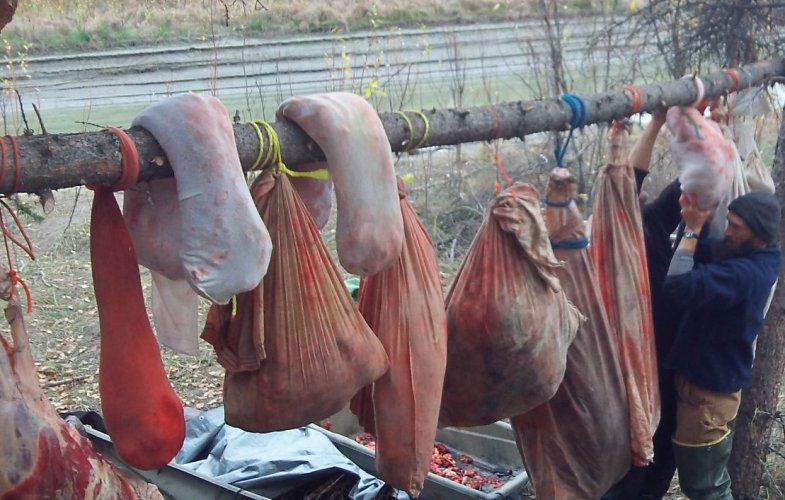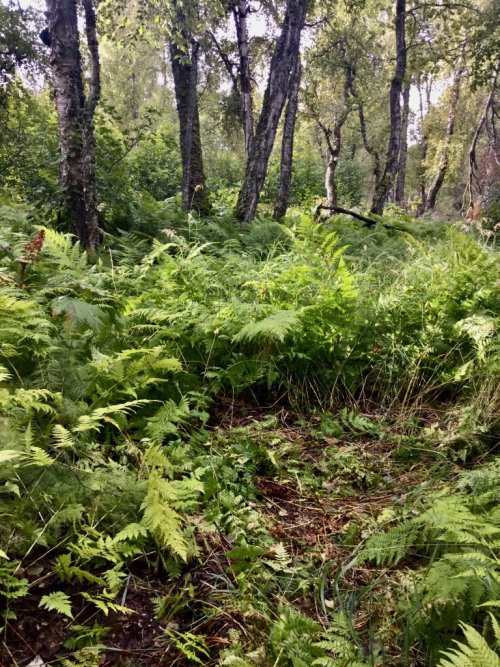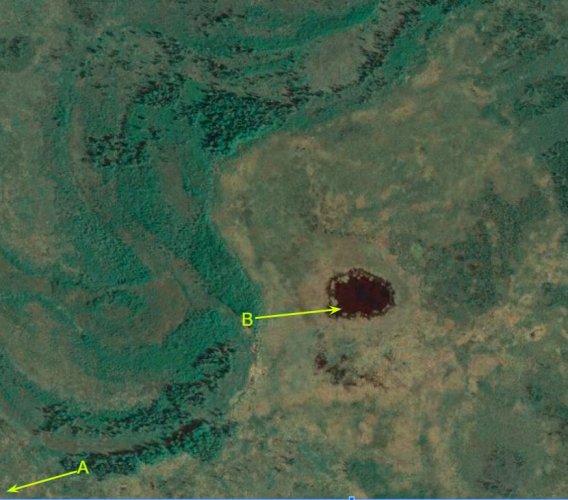AlaskaHunter
Well-known member
There are 3 basic types of moose hunts in Alaska: ridgetop, floating, lake hunts.
Ridgetop:
Ridgetop has several advantages:
1) Typically you do not move much, same camp night after night.
2) You can glass much more country, looking for that flash of white antler down in the spruce and willows.
3) Firmer ground makes for easier packing.
The farthest I've packed a bull was 3 miles and that was a ridgetop hunt.
4) Typically cool windy weather so meat is cool and dry.
5) Mixed bag opportunities, for example one hunter with a moose tag, the other a caribou tag. Bears in blueberry patches.
6) Calling from the same locations every day may help draw in bulls from great distances
There are several disadvantages of a ridgetop hunt:
1) You may see a bull miles away and decide to go after him, leading to a long heavy pack.
That bull I shot at 3 miles I ended up packing 3.5 days, a total ~50 miles, half with 60 pounds on my back.
2) These hunts are often transported by super cub which is more expensive, for example another
$1100 for each moose in addition to the $3000 to fly in/out for each hunter.
50 pound limit on gear per hunter, unless you want to pay more $$$ for an extra trip.
With the 50 pound limit, for us typically a small backpack style camp.
3) Sometimes have to drop down substantially to get water if its been a dry summer.
Floating:
Floating has several advantages:
1) Bigger plane on floats so often the entire party is transported in one trip.
2) Easier pack as typically the bull is shot in the river corridor, close to the raft or boat.
3) With a raft/boat much more hauling capacity so a more luxury camp is possible.
4) It is possible to do a DYI float along the road system in Alaska.
5) Abundant firewood along most river systems. No problem getting drinking water.
There several disadvantages to floating:
1) Limited visibility with tall willow along the riparian corridor.
2) The need to move every day to get to the pickup spot on time.
3) With the need to move, long 2-day calling sessions are not the norm
4) If you shoot a bull early, that means keeping the meat dry and loading/unloading 600 pounds every day on/off the raft.
5) Shooting a bull near water sometimes means a dead bull in the water.
We always have waders, 2 jet sleds, at least 1 rope come-along and 200 feet of rope.
A dead bull in ten feet of water can be winched to shallower water and then dealt with.
Lake based hunts:
Advantages:
1) Bigger plane on floats so often the entire party is transported in one trip (therefore less expensive)
2) Calling from the same locations day after day may draw in bulls from a great distance
Disadvantages:
1) You pretty much stuck to one camp spot for the hunt
2) If a private party lands on the lake, competition.
3) Flat terrain sometimes makes it difficult to glass great distances.
4) A bull in the water with no boat/raft can be a logistic challenge.
Ridgetop:
Ridgetop has several advantages:
1) Typically you do not move much, same camp night after night.
2) You can glass much more country, looking for that flash of white antler down in the spruce and willows.
3) Firmer ground makes for easier packing.
The farthest I've packed a bull was 3 miles and that was a ridgetop hunt.
4) Typically cool windy weather so meat is cool and dry.
5) Mixed bag opportunities, for example one hunter with a moose tag, the other a caribou tag. Bears in blueberry patches.
6) Calling from the same locations every day may help draw in bulls from great distances
There are several disadvantages of a ridgetop hunt:
1) You may see a bull miles away and decide to go after him, leading to a long heavy pack.
That bull I shot at 3 miles I ended up packing 3.5 days, a total ~50 miles, half with 60 pounds on my back.
2) These hunts are often transported by super cub which is more expensive, for example another
$1100 for each moose in addition to the $3000 to fly in/out for each hunter.
50 pound limit on gear per hunter, unless you want to pay more $$$ for an extra trip.
With the 50 pound limit, for us typically a small backpack style camp.
3) Sometimes have to drop down substantially to get water if its been a dry summer.
Floating:
Floating has several advantages:
1) Bigger plane on floats so often the entire party is transported in one trip.
2) Easier pack as typically the bull is shot in the river corridor, close to the raft or boat.
3) With a raft/boat much more hauling capacity so a more luxury camp is possible.
4) It is possible to do a DYI float along the road system in Alaska.
5) Abundant firewood along most river systems. No problem getting drinking water.
There several disadvantages to floating:
1) Limited visibility with tall willow along the riparian corridor.
2) The need to move every day to get to the pickup spot on time.
3) With the need to move, long 2-day calling sessions are not the norm
4) If you shoot a bull early, that means keeping the meat dry and loading/unloading 600 pounds every day on/off the raft.
5) Shooting a bull near water sometimes means a dead bull in the water.
We always have waders, 2 jet sleds, at least 1 rope come-along and 200 feet of rope.
A dead bull in ten feet of water can be winched to shallower water and then dealt with.
Lake based hunts:
Advantages:
1) Bigger plane on floats so often the entire party is transported in one trip (therefore less expensive)
2) Calling from the same locations day after day may draw in bulls from a great distance
Disadvantages:
1) You pretty much stuck to one camp spot for the hunt
2) If a private party lands on the lake, competition.
3) Flat terrain sometimes makes it difficult to glass great distances.
4) A bull in the water with no boat/raft can be a logistic challenge.









